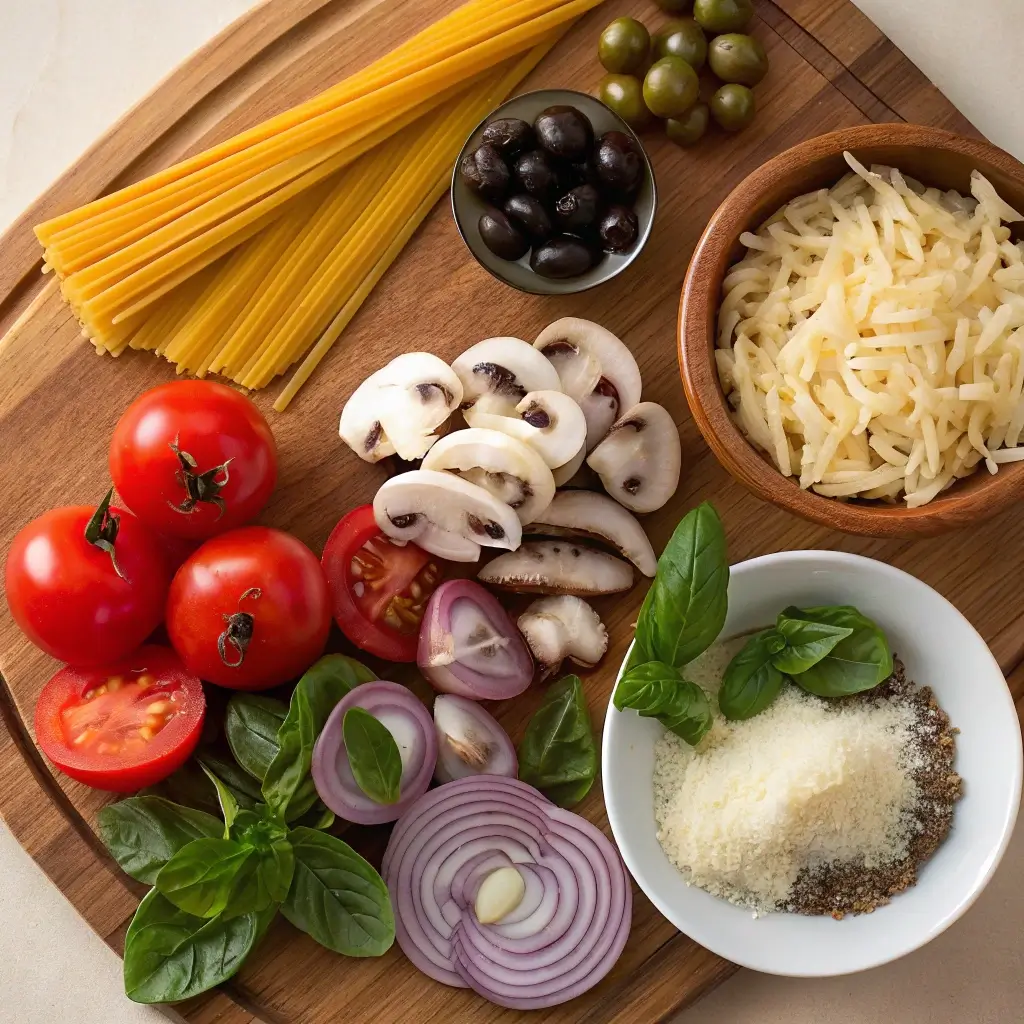Pasta is a versatile and beloved dish that has found its way into the hearts and kitchens of people all over the world. Whether you’re a seasoned chef or a beginner in the kitchen, pasta offers endless possibilities for creativity and flavor. In this article, we’ll explore how you can elevate your pasta game, turning a simple dish into a culinary masterpiece. From selecting the right ingredients to mastering the art of presentation, we’ll cover everything you need to know to jazz up your pasta.
Table of Contents
Why You’ll Love This
There are countless reasons to fall in love with this approach to pasta. First and foremost, it’s incredibly customizable. Whether you’re in the mood for something light and refreshing or rich and indulgent, you can tailor your pasta to suit your cravings. Additionally, this method is quick and easy, making it perfect for busy weeknights or last-minute dinner parties. Finally, by learning a few simple techniques, you can transform your pasta from ordinary to extraordinary, impressing your family and friends with your culinary skills.
Ingredients

To create a delicious and memorable pasta dish, you’ll need a few key ingredients. Here’s a list of what you’ll need to get started:
- Pasta: Choose your favorite type, whether it’s spaghetti, penne, fusilli, or something more unique like orecchiette or farfalle.
- Olive Oil: A good quality extra virgin olive oil can make all the difference in flavor.
- Garlic: Fresh garlic adds a robust and aromatic touch to your dish.
- Onion: A finely chopped onion can provide a sweet and savory base for your sauce.
- Tomatoes: Fresh tomatoes or high-quality canned tomatoes are essential for a rich and tangy sauce.
- Herbs: Fresh basil, parsley, and oregano can add a burst of flavor to your pasta.
- Cheese: Parmesan, Pecorino Romano, or mozzarella can add a creamy and savory element to your dish.
- Protein: Optional, but adding chicken, shrimp, or sausage can make your pasta more substantial and satisfying.
- Vegetables: Bell peppers, zucchini, mushrooms, and spinach are great options for adding color and nutrition to your pasta.
Variations
One of the best things about pasta is its versatility. Here are a few variations to consider:
- Creamy Alfredo: Swap out the tomato-based sauce for a rich and creamy Alfredo sauce made with butter, cream, and Parmesan cheese.
- Pesto Pasta: Use a vibrant and herbaceous pesto sauce made from basil, pine nuts, garlic, and olive oil.
- Spicy Arrabbiata: Add some heat to your pasta with a spicy Arrabbiata sauce made with chili flakes and garlic.
- Seafood Pasta: Incorporate a mix of seafood like shrimp, clams, and mussels for a luxurious and flavorful dish.
- Vegetarian Delight: Load up on vegetables like roasted red peppers, artichokes, and sun-dried tomatoes for a healthy and colorful pasta dish.
Steps

Now that you have your ingredients ready, let’s dive into the steps to create a delicious pasta dish:
- Boil the Pasta: Start by bringing a large pot of salted water to a boil. Add your pasta and cook it according to the package instructions until it’s al dente. Drain the pasta, reserving a cup of the pasta water for later.
- Prepare the Sauce: While the pasta is cooking, heat a generous amount of olive oil in a large skillet over medium heat. Add the chopped onion and garlic, sautéing until they become fragrant and translucent.
- Add Tomatoes: If you’re using fresh tomatoes, chop them finely and add them to the skillet. If you’re using canned tomatoes, crush them with your hands before adding them to the skillet. Let the tomatoes simmer until they break down and form a thick and flavorful sauce.
- Incorporate Herbs and Seasoning: Add your fresh herbs, salt, and pepper to the sauce, stirring to combine. If you’re using dried herbs, add them earlier in the cooking process to allow their flavors to infuse into the sauce.
- Combine Pasta and Sauce: Add the cooked pasta to the skillet with the sauce, tossing to coat the pasta evenly. If the sauce is too thick, add a bit of the reserved pasta water to loosen it up.
- Add Protein and Vegetables: If you’re including protein or vegetables, add them to the skillet at this stage, cooking until they’re heated through and tender.
- Finish with Cheese: Remove the skillet from the heat and stir in your grated cheese, allowing it to melt and create a creamy and savory coating for the pasta.
- Garnish and Serve: Transfer the pasta to a serving dish and garnish with additional herbs, a drizzle of olive oil, and a sprinkle of cheese. Serve immediately and enjoy!
Tips and Tricks
To ensure your pasta turns out perfect every time, here are some essential tips and tricks:
- Salt Your Pasta Water: Don’t be shy with the salt when boiling your pasta. The water should taste like the sea to properly season the pasta.
- Reserve Pasta Water: The starchy pasta water is a secret weapon for creating a silky and cohesive sauce.
- Don’t Overcook the Pasta: Aim for al dente pasta, which is firm to the bite. Overcooked pasta can become mushy and unappetizing.
- Use Fresh Ingredients: Whenever possible, opt for fresh herbs, vegetables, and high-quality olive oil to enhance the flavor of your dish.
- Experiment with Flavors: Don’t be afraid to try new combinations of ingredients and seasonings to elevate your pasta.
How to Serve
Presentation is key when it comes to serving pasta. Here are some ideas to make your dish visually appealing:
- Family Style: Serve the pasta in a large, elegant bowl in the center of the table, allowing everyone to help themselves.
- Individual Portions: Plate the pasta in individual bowls or plates, garnishing each serving with fresh herbs and a sprinkle of cheese.
- Accompaniments: Serve your pasta with a side of crusty bread, a fresh salad, or a glass of crisp white wine to complete the meal.
Make Ahead and Storage
If you’re planning to make your pasta ahead of time or have leftovers, here’s how to store and reheat it:
- Make Ahead: You can prepare the sauce in advance and store it in the refrigerator for up to three days. When you’re ready to serve, simply cook the pasta and combine it with the reheated sauce.
- Storage: Store any leftover pasta in an airtight container in the refrigerator for up to three days. To reheat, add a splash of water or olive oil to the pasta and heat it in a skillet over medium heat until warmed through.
- Freezing: While pasta can be frozen, it’s best to freeze the sauce separately and cook the pasta fresh when you’re ready to serve.
FAQs
Q: Can I use gluten-free pasta?
A: Absolutely! There are many gluten-free pasta options available that work well with this recipe. Just be sure to follow the cooking instructions on the package.
Q: How can I make my pasta sauce thicker?
A: If your sauce is too thin, let it simmer for a bit longer to reduce and thicken. You can also add a small amount of tomato paste or a slurry made from cornstarch and water.
Q: What’s the best way to reheat pasta?
A: The best way to reheat pasta is in a skillet over medium heat with a bit of water or olive oil. This helps to revive the pasta and prevent it from drying out.
Q: Can I add wine to my pasta sauce?
A: Yes, adding a splash of white or red wine to your sauce can enhance the flavor. Just be sure to let it simmer for a few minutes to cook off the alcohol.
Q: How can I make my pasta dish more nutritious?
A: Incorporate more vegetables, use whole grain or legume-based pasta, and opt for lean proteins like chicken or shrimp to make your pasta dish more nutritious.
Conclusion
Pasta is a timeless and versatile dish that can be elevated with a few simple techniques and high-quality ingredients. By following the steps and tips outlined in this article, you can transform your pasta into a culinary masterpiece that will impress your family and friends. Whether you’re in the mood for something classic or innovative, there’s a pasta dish out there for everyone. So go ahead, jazz up your pasta, and enjoy the delicious results!

